Calf Care Givers Share Their Experience with Paired Housing
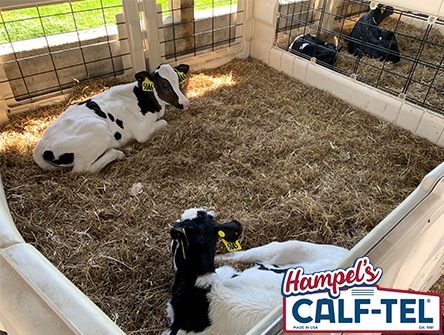
It seems one only need pick up the latest farm publication or attend a dairy conference and the topic of paired or social rearing of calves comes up. We thought it worthwhile to ask some calf care managers to share their experiences with it and appreciate Calf-Tel dealer Holm & Laue assisting in gathering responses from customers in Germany to join the panel.

Mystic Valley Dairy, Wisconsin, USA
Number of pre-weaned calves: 60
Calves raised annually: 325
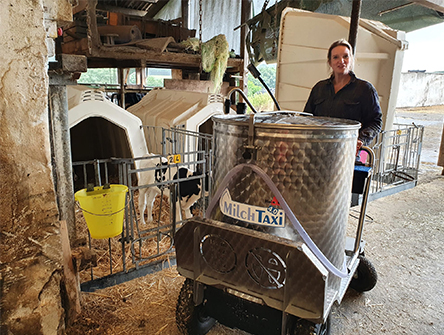
Schönberger Hof, Western Germany
Number of pre-weaned calves: 110
Calves raised annually: 300
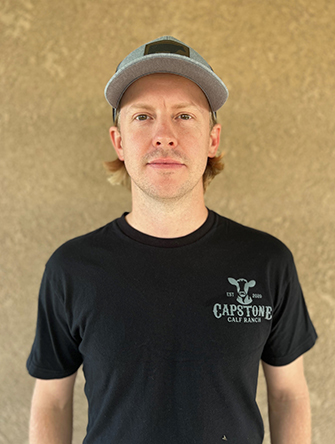
Capstone Ranch, California, USA
Number of pre-weaned calves: 400
Calves raised annually: 2000
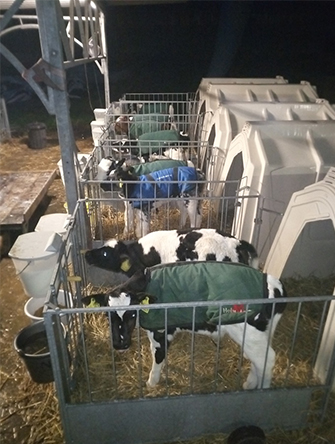
Marcus Rohwer, Northern Germany
Number of pre-weaned calves: 48
Calves raised annually: approx. 70, plus 180 calves sold after their 14th day
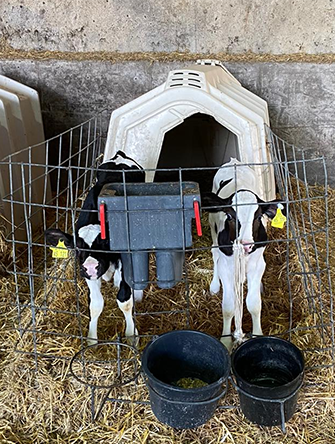
Lübbinchen Milch & Mast, Germany
Number of pre-weaned calves: 76 in pairs & 94 on milk bars with 10 nipples
Calves raised annually: 570 (27% of calvings)
Please share a bit about your operation.
BREUNIG: We milk 460 Registered Holsteins and farm 1070 acres. We currently have a 33,000-lb. rolling herd average and have developed a market for fresh cows to other farms. With our calves, we see very little scours or death loss and bull calves are sold at birth.
SCHONBERGER: We have a mixed farm of grain, dairy cattle, fattening bulls and biogas in the Westerwald, between Cologne and Frankfurt, Germany. We cultivate 300 hectare and milk 300 Holstein cows. Our last major construction project was the cowshed and milk house in 2009, but now a new calf barn is in the planning stage.
HOUCHENS: Capstone Ranch consists of 2 dairy locations, crop and orchard farming, and a calf ranch. In the summer of 2019, we started raising a portion of our calves in house. The rest of our calves are raised off-site by a custom grower.
ROHWER: Our farm has 240 Holstein-Friesian cows with prolonged lactation in individual animals resulting in 10,000-liter herd performance. To reduce the number of offspring, we are using beef sperm for crossbreed calves. We have 160 hectares of grass and corn silage, with little arable farming, at Westerronfeld in northern Germany.
PIRIMOV: We milk 2000 Holstein-Friesian cows and have 70 total employees. Forty of them are on the milk production team. We are GMO Free.
What led your operation to start pairing calves?
BREUNIG: Following the research from Dr. Jennifer Van Os at UW-Madison we began pairing calves. The research showed no negative effects. I also wanted to improve the stalls in my calf barn to get better ventilation too. Animal welfare is a big deal and consumers do not like calves being raised individually. We did pairs to proactively address this concern.
SCHONBERGER: I read some reports that appealed to me a lot and so I tried it out.
HOUCHENS: Research articles and word of mouth led us to the idea of pairing calves. We were hopeful we could grow a more resilient animal through earlier onset of starter intake, earlier social interactions, and improved adaptability of the calf post-hutch.
ROHWER: We are able to increase our stock with the same number of hutches.
PIRIMOV: Three years ago, there were not enough hutches available for all the calves, so two calves were sometimes housed in a hutch. It worked very well, so it has become the standard.
How long have you been raising calves in pairs? How did you raise calves previously?
BREUNIG: We have been raising calves in pairs since March 2020. Prior to that, calves were raised in individual hutches with half in a tunnel vent barn and the other half outside in hutches.
SCHONBERGER: We have been raising in pairs for about three years now. Before that, they were raised in single (individual) hutches.
HOUCHENS: We have been raising calves in pairs for about a year and a half. We first began pairing calves with two calves in one XL (Calf-Tel 35|85) hutch. This worked well but the pen and hutch area were difficult to keep dry and required much more frequent bedding. We have since transitioned to two calves in two XL hutches connected through shared fencing. Prior to beginning paired rearing, we were raising calves one calf per XL hutch.
ROHWER: We started raising in pairs in 2017 and prior to that were in individual hutches.
PIRIMOV: We have been raising in pairs for about 3 years. Previously the calves were in individual hutches.
Tell us about when and how you pair calves please.
BREUNIG: We pair calves from day 1 of their life and they stay paired until moving to the weaned calf barn. We usually have enough calves born so there is only a 1 or 2-day difference in age of the pair.
SCHONBERGER: My approach is to keep them in pairs as early as possible, preferably from the beginning. If it doesn’t fit, I wait until after the colostrum/transit phase is done before pairing. We have Twin Hutches (Calf-Tel 35|85) from Holm & Laue outside but with a canopy and calf pens in the stable.
HOUCHENS: Calves are placed in hutches that are paired but have fencing to separate the calves. This fencing stays in place for at least one week and is not removed until both calves drink their bottle well and are healthy. If one of the calves become sick, the fencing is replaced to separate the pair until the calf returns to health. Calves remain paired until they are removed from the hutch.
ROHWER: We raise only the calves for the market in this system because in our calves despite ad lib feeding the cross sucking has caused high looses with empty quarters, injured teats and failure to let down milk as cows. These calves are housed in Calf-Tel Pro hutches with an additional bucket holder on the door.
PIRIMOV: We have 8 heat boxes in the calving area and calves remain there for between 12 to 24 hours and are supplied with 3-4 liters of colostrum within 3 hours. They are then converted to the pair housing.
How much milk or milk replacer do you feed and how often each day do you feed?
BREUNIG: Calves are fed one gallon twice per day with Vita Plus Magnify. We start to wean at 46 days and calves switch to buckets at day 7 of weaning. The weaning process takes 20 days.
SCHONBERGER: Normally I feed 4 liters of milk replacer three times daily, but due to the current price situation, we are currently feeding 3 liters of milk replacer three times each day.
HOUCHENS: We feed hospital/line milk fortified with a balancer. Calves are fed every 8 hours. They start at 2 quarts for the first week and then go to 3 quarts until weaning.
ROHWER: Twice daily in a hutch each receives 7-8 liters of whole milk. From the 20th day of life, they move to the Holm & Laue automatic feeder up to 50 days of age, maximum of 15 liters per day of whole milk. They are then weaned until 100 days of life.
PIRIMOV: For the three weeks of pairing, we feed about 12 liters/calf. The schedule follows:
6:00 a.m. Empty residual quantities
7:00 a.m. Filling 15L into each double nipple bucket
10:00 a.m. Filling all empty and almost empty buckets up to 2-4 liters
Afternoon Replenish to 7 liters
We feed 100% whole milk that is pasteurized, acidified and fortified with additive. From the first day we use hard teats, as no big difference was found when using soft teats.
Do you see any cross-sucking between calves? And if so, how do you address it?
BREUNIG: We feed with Peach Teat buckets instead of normal buckets and that helped a lot. We also wean over 10 days by giving smaller meals. We had more trouble with cross-sucking when calves were switched to 1x per day milk feeding at weaning. The calves were too hungry.
SCHONBERGER: No, we don’t see any more problems than before.
HOUCHENS: I can’t say it never happens but it’s uncommon for us to see. If we see it persist in a pair, we will separate the calves with the fencing.
ROHWER: Yes, we spray bitter substance from the horses (antibite) or cannibal spray from poultry farming onto the udder system. For heifers a ring is pulled through the upper lip by a veterinarian. The regular suction weaners are difficult to use because of our water fountains with push valves.
PIRIMOV: Cross sucking is an annoying topic. No solution has yet been found, in the pairing phase or the groups of ten. We use nose rings as a young animal to discourage it.
Do you track any metrics for your paired calves? Was there a difference from your previous calf-rearing system?
BREUNIG: We like to double birth weight by weaning and try to get two pounds per day gain. Starter intake is also a big deal for calf success and needs to be palatable.
SCHONBERGER: We weigh calves at birth, after moving to the calf barn and to wean consistently, but only for a year.
HOUCHENS: When we first started with two calves in one hutch, we had the same average daily gain in paired vs unpaired groups. Since the switch to two hutches per pair we have seen a slight improvement in the paired calves vs single in the hutch.
ROHWER: No, we have over 1000-gram daily increases, so there has been no difference.
PIRIMOV: From birth to 3 weeks, our average daily gain is 850 grams. From four weeks to 90 days, calves gain an average 950 grams/day. We have tested whether we can go down to weaning at 70 days, but daily gains reduced to 750g, so now we are weaning again at 90 days. We also weigh again before insemination.
Is there any advice or observations you would share with others considering paired raising?
BREUNIG: It is important to make sure both calves are healthy. One can fall behind, if you don’t monitor their intake closely. We also ultrasound the calves’ lungs to look for subclinical pneumonia too. An observation on paired calves in hutches is that they like to lay together in the same hut.
SCHONBERGER: Just do it. There is nothing more beautiful than pair keeping with completely different social behavior of the animals. They drink more and learn from each other.
HOUCHENS: A high level of nutrition has been important in reducing the negative impacts in raising calves in pairs. It limits negative behaviors like cross-suckling and reduces negative health events like pneumonia. I also think it is beneficial to be ready to separate calves if one is suffering from illness.
ROHWER: We pair bull calves and calves for market at any time, but in the case of heifers, I advise against pair housing because of the cross sucking we have experienced. I also recommend using light colored drinking buckets for water as it allows better control of water quality!
PIRIMOV: The size of calves is more important than age. Calves of the same size are always paired into a hutch, even when a large and small calf might be closer together by age.
